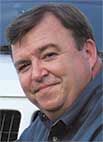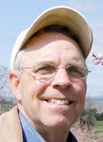 Cattle are in Lawson Hembree's blood. Actively ranching for the last 15 years, Lawson is the sixth generation of his family to raise cattle on the same plot of land near Ozark, Ark., since before Arkansas was a state. Hanging in the hallway of Lawson's Fort Smith office are conveyance deeds signed by US Presidents Andrew Jackson and Martin Van Buren giving Lawson's ancestor, John Titsworth, possession of land on the banks of the Arkansas River starting in November, 1830. That land now makes up the core of Sugar Hills Farm, which comprises over 3000 acres and holds a herd of 200 breeding Angus females.
Cattle are in Lawson Hembree's blood. Actively ranching for the last 15 years, Lawson is the sixth generation of his family to raise cattle on the same plot of land near Ozark, Ark., since before Arkansas was a state. Hanging in the hallway of Lawson's Fort Smith office are conveyance deeds signed by US Presidents Andrew Jackson and Martin Van Buren giving Lawson's ancestor, John Titsworth, possession of land on the banks of the Arkansas River starting in November, 1830. That land now makes up the core of Sugar Hills Farm, which comprises over 3000 acres and holds a herd of 200 breeding Angus females.
"That's probably the neatest thing about the farm, that it's been in our family for six generations," said Lawson. "Dad raised Santa Gertrudis and commercial herds, but as the market moved, we decided to go back to a seed stock herd with registered purebreds." The breed Lawson decided on was Angus.
"We went with Angus after extensive research, based on the marketability, and the support from the association," said Lawson. "Angus was the only breed with brand name recognition with consumers." On average, Sugar Hill Farms sells between 100 to 120 head a year. "We sell a lot of seed stock, from replacement cows to animals to other seed stock ranches." Lawson's success with Angus led to him being elected as the president of the Arkansas Angus Association in January, 2008.
Overseeing such an operation requires constant attention. "Herd health is an on-going challenge," he said. "Particularly in light of the National Animal I.D. system and customer demand. Our herd health program prescribes steps to prevent disease, and [identify] disease, and once disease is [identified], to aggressively manage it."
The main herd health concerns Lawson deals with are Johne's Disease and BVD, but he plans to use more technology to monitor herd health and help him increase overall efficiency.
"We're going to implement electronic tracking with ID tags with the 2009 calf crop," said Lawson. "Every time we run an animal through a chute, electronics on the chute will ID that animal, and we'll be able to input data on the tag instead of writing on a legal pad or on the back of a feed sack. We'll utilize the Angus Information Management System that the Angus Association has made available and we'll be able to track revenue and expense down to the individual animal, and track progeny sales on individual cows."
Lawson sees improved efficiency as Sugar Hills Farm's long-term goal. "The industry is changing and there is a greater need for feed efficiency without sacrificing market traits and other production traits." And technology, such as DNA testing, helps him to make his herd as efficient as possible.
In addition to helpful technology, Lawson sees the overall helpful attitude in the cattle business as a big plus. "That's one of the nice things about this business," Lawson said. "We don’t mind sharing our strategy with anyone. There are so many producers, it's just not likely that anyone can run anybody else out of business."
Lawson sees a bright future for cattle operations in Arkansas for three main reasons. "There are available resources here," said Lawson. "There is land that's under-utilized for which cattle would be the highest and best use. We've got feedstuffs available other than grain." Lawson sees cattle as having an advantage over other livestock since they can be raised on feed besides grain. "And we've got the infrastructure necessary to support cattle through the research facilities of the University of Arkansas and the Extension Service."
And with that support, and the direction of Lawson Hembree it is likely that the agricultural enterprise started by John Titsworth 170 years ago, will continue to produce for years to come.







